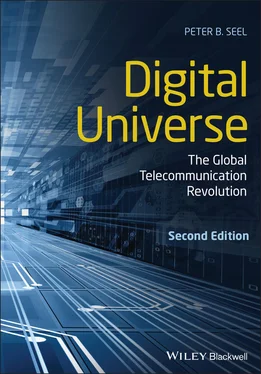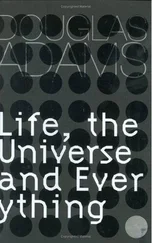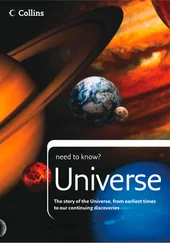The near-ubiquitous use of algorithmically driven software, both visible and invisible to everyday people , demands a closer inspection of what values are prioritized in such automated decision-making systems … I believe that artificial intelligence will become a major human rights issue in the 21st century. We are only beginning to understand the long-term consequences of these decision-making tools in both masking and deepening social inequality. ( emphasis added .) 26
Most search engines are now programmed to reject pornography sites, unless the user specifically asks for unfiltered results. Google has updated its search algorithms so that a recent search for “black girls” returned photos of aerospace engineer Tiffany Davis and the top two stories were for the pro-digital literacy group Black Girls Code and a biography about the legendary NASA mathematician Katherine Johnson, subject of the film Hidden Figures . Another recent Google search for the phrase “why are Black women so” returned a first listing for a YouTube (owned by Google) video titled, Why are Black Women So Angry? Produced by Buzzfeed in 2016 and running under six minutes, it features young Black women talking about the source of their anger and why they resent allegations in the media that it is misplaced. The likely reason it was ranked first in the search is that the video had been viewed 2.5 million times.
The fact that search engines are providing more equitable and less-biased results does not detract from Noble’s central thesis. She states that a society cannot comfortably sit back and allow decisions about what we can or cannot see to be made by AI algorithms designed, by engineers in tech companies, to grab and hold our attention . One of the key attributes of YouTube is that the algorithms that automatically serve the next video are programmed to make it more controversial so that the viewer will stay on the site longer and thus see more advertising. This economically benefits YouTube and its parent company, Google. Some critics have argued that these algorithms serve up increasingly controversial videos that divide already polarized audiences. The “black boxes” of AI-based decision-making are designed by humans, who bring all the biases of their education, class, and gender to the lab as they create the tools that define our online experiences and how we acquire and process information gathered online. In Chapter 12on privacy and surveillance, we will return to this topic of vital importance to all who live and work in the digital universe.
In April 2000, Wired magazine published an article titled “Why the Future Doesn’t Need Us” written by Bill Joy, then the chief scientist of Sun Microsystems. 27Drawing on dystopian visions of the future of genetics, robotics, and nanotechnology, he concluded that a future is feasible where robotic systems might take over management of all global systems (whether invited to or not). These networked systems, if given unrestricted opportunity to manage global affairs for the world’s human population, might decide that we are expendable competitors for the world’s resources, and terminate humanity. Joy’s Wired article was widely read and cited as an example of how advanced technology might evolve in a dystopian manner during the twenty-first century – without restrictions imposed by world governments.
Joy was attacked after publication of the article as a “neo-Luddite” – one who is opposed to modern technological change. The Luddites were a group of textile workers who attacked the first mechanized weaving looms in the new mills in the Midlands of England in 1811 as a way to forestall mechanization. They were not successful. 28As one who co-founded Sun Microsystems in Silicon Valley and helped create TCP/IP, the fundamental communication protocol for the internet, it is erroneous to cast Bill Joy as a Luddite. In fact, it was due to his reputation as a computer scientist involved in the creation of the internet that people read and seriously considered his vision of possible dystopian futures. In the nineteenth century, coal miners in England and Wales took caged canaries with them deep into the pits to alert them of dangerous mine gases. 29Joy provides a similar advance warning about the potential dangers to civilization of these twenty-first-century technologies.
The digital universe is fundamentally linked to the development of nanotechnology (it is essential for the continued extension of Moore’s law in the next two decades) and the computer-based analysis of complex genetic sequences. Information technology is also central to the evolution of artificial intelligence in robotic systems. However, I am hopeful that the same digital technologies that are supporting development in these areas will also facilitate the communication of the possible consequences, at least those we can foresee. Joy’s Wired article was widely disseminated over the internet (and is easily accessible on its website 30) and has led to a lively online debate of its premises.
Ironically, the digital universe that could lead to these possible dystopian aspects of the diffusion of information and communication technology is also the same system that can alert humanity to the dangers of unrestricted development. The canary in the modern “mines” of technology is information. The internet, to no one’s surprise, has emerged as a primary medium of communication about the implications of the development of technology. The work of related organizations such as the Long Now Foundation (focused on long-term thinking) and the Lifeboat Foundation (which has an influential board of scientists advising it on nanotechnology and biotechnology) is facilitated by the internet and, yes, email plays a central role in their communication.
Negotiating the Role of Technology in Modern Life
The role that technology plays in our lives can be negotiated, to a point. People in contemporary networked societies have a great deal of choice concerning their use of technologies to communicate and recreate. We each make daily choices about whether to carry a mobile phone, tablet, or other portable electronic device. When it comes to the working world, we may not have as much choice. Increasingly, employers are requiring that employees be electronically connected to the company 24 hours a day, seven days a week. The numerals 24-7 are universally understood by workers in Bangalore, Beijing, Boston, and Berlin. We are losing the clear demarcation line between home and work that has been in place since workers stopped shopping in company stores and living in company houses in nineteenth-century mining towns. The option of working at home by telecommuting has been a boon to many, especially parents with pre-school children in the house. The downside for telecommuters has been learning where to draw the line between work and home. 24-7 access means that laboring for one’s employer can extend far beyond the traditional 40-hour work week.
Aside from work, we do negotiate with ourselves and our families about whether to adopt a new technology and its use. Parents fret over whether to give a child under age 12 a mobile phone for safety reasons, knowing that its usage will be predominantly social in sending text messages back and forth. For adults, turning off one’s mobile phone can be seen by friends and colleagues as an anti-social act – likewise for the failure to answer an email within a day. We can negotiate with the usage of communication technology, up to a point, where social norms have increasing influence. This process of negotiating the use of technology by both individuals and organizations will be explored in subsequent chapters. It is a multifaceted and continually evolving aspect of the digital universe of information and communication technology. However, one has to marvel at the clueless person in church who takes a mobile phone call in the middle of a funeral – and then reacts in surprise at the angry looks of other mourners.
Читать дальше












